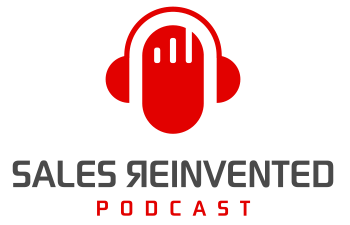Episode #406: Nick Kane

Meet
Nick Kane
Nick Kane is a founder and Managing Partner of Janek Performance Group, a leading sales performance organization providing sales training and sales consulting solutions. Nick has more than 25 years of experience in the sales, sales leadership and sales enablement space and has been a thought leader and authority, supporting hundreds of clients in optimizing their sales performance. Nick co-authored the book “Critical Selling: How Top Performers Accelerate the Sales Process and Close More Deals,” and has penned dozens of articles around sales performance, management, and leadership. A highly-requested keynote speaker, Nick has lead numerous presentations and panel discussions around the topic of sales transformation.
Our Mission Is To Change The Negative Perception Of Sales People
Our Vision Is A World Where Selling Is A Profession To Be Proud Of
To Nick Kane, cold-calling is most effective when accompanied by all cold outreach, including emails, canvassing in person, networking, and social selling activities. They must all work together to prospect for new business. How you approach will vary depending on numerous factors, including your industry. But the key to ultimate effectiveness is that your outreach must be consistent. Nick shares more about his cold outreach process in this episode of Sales Reinvented.
How Nick prepares for cold-calling
Nick prepares for cold-calling methodically. He argues that:
- You have to find the right time to conduct prospecting and cold-calling activities and then conduct your outreach during that time consistently. That will help ensure you conduct those activities.
- You have to go into these activities knowing that you’ll face objections and rejection. People are used to saying, “I’m not interested, I’m all set.” You need to prepare for that.
- You need to make sure that you’re there to sell the appointment—not the product or service—in the call. You’re there to schedule a second conversation.
How does Nick capture a prospect’s interest? It comes down to how well you or your brand are known in the industry. If you have to create awareness of the company, you’d take a different approach than if you had a recognizable household name.
You have to use terminology to build awareness of needs. A strong insight or data point that piques interest early in the call is key. He asks for time—don’t ask for permission. Someone will always take an out if it’s given to them.
Scripts are a useful guide but you need the skills and capabilities to think on your feet and pivot when necessary. You also need rebuttals for common objections prepared (because they can be boiled down to consistent things).
Nick’s top cold-calling dos and don’ts
Where do you start?
- Be selective in who you’re targeting. Choose prospects who will find value in your value proposition. It’s no longer a shotgun approach. Who is more likely to be interested in what you have to offer?
- Make sure that your message is personalized and specific to the prospect. You can’t take a blanket approach to everyone.
- Prepare insights and data to pique interest early and often in the outreach. You can’t just call and ask for their time. You will be rejected and they feel no sense of obligation to you.
- Don’t try to sell a product or solution on the cold call, unless it’s a transactional sale. You’re selling the appointment.
- Don’t forget about the importance of follow-up. It takes a minimum of 8–10 touches to elicit a response. They need to see you in a variety of ways: email, LinkedIn outreach, and calls and voicemails.
- Make sure you’re always prepared to handle initial objections. They’re a pre-programmed response. Master showing empathy and responding effectively to create an awareness of needs.
How Nick handles objections/rejections during cold calls
Too many salespeople are comfortable with their existing pipeline and don’t focus on continuing to build it. Because of that, many have to scramble to refill it.
Nick did an outreach when he was in the technology space. He was rejected immediately. He thanked this person for their time and acknowledged how valuable it was. He shared a data point from a direct competitor and how he’d helped them reach business objectives.
It piqued their interest which turned into a conversation about their needs, which led to multiple follow-up calls and a large sale at the end of the process.
Persistence is key. You have to know that cold-calling works, it requires dedication, persistence, and a sophisticated and well-planned process.
Resources & People Mentioned
Connect with Nick Kane
Connect With Paul Watts
Audio Production and Show notes by
PODCAST FAST TRACK
https://www.podcastfasttrack.com
Learn More About Nick Kane
What was a pivotal moment or experience in your career that shaped your approach to cold calling, and how did it change your perspective or strategy?
One pivotal moment in my career that significantly shaped my approach to cold calling occurred during my time working in my first sales role in a call center. I was still a teenager then and we telecom plans, B2B. One of the calls I made happened to be an elderly woman who owned a small business. When I reached out, it felt like she simply wanted someone to talk to. Rather than sticking to my sales script, I engaged her in genuine conversation, listening to what she wanted to share and providing empathy. By the end of the call, she felt comfortable enough in the value I provided and decided to switch over to our services. This experience taught me the importance of building authentic connections with customers rather than just focusing on the sale. From then on, I approached cold calling with a more empathetic and personalized strategy, understanding that genuine rapport would always be more impactful than a well-rehearsed sales pitch.
Can you share a specific tactic or approach you’ve used in cold calling that significantly increased your success rate? Please provide a brief example or case study.
Incorporate ideas and insights early and often! Rather than solely relying on product features, share industry insights as well as success stories or testimonials from satisfied customers. For instance, at Janek we offer sales training and coaching services. We often cite specific training outcomes, metrics or improvements as a result of the training pertaining to companies of a similar size and industry. This approach helps build credibility and trust, as they can see tangible evidence of the value our offerings provide.
Cold calling often comes with its set of challenges and rejections. Can you share a particularly tough challenge you faced while cold calling and how you overcame it?
A prospect was initially dismissive and uninterested in hearing about our product. Despite my attempts to engage and address their concerns, they remained adamant about not wanting to continue the conversation. Instead of giving up, I decided to pivot my approach by asking open-ended questions to better understand their pain points and needs and shared some insights to pique their interest. Through active listening, I uncovered a specific issue they were facing that our product could solve, and I tailored my approach accordingly, highlighting how our services could directly address their challenges. By shifting the focus from a canned presentation to a problem-solving conversation, I was able to re-engage the prospect and ultimately convert their initial resistance into genuine interest, leading to a successful outcome.
What are the top three tools or resources (e.g., software, books, training programs) you consider essential for someone looking to improve their cold calling skills and outcomes?
Cold calling has arguably become a lot harder in the last 10 years. Becoming more targeted is key. Access to intent data can be a game changer – Bombora, 6sense, or ZoomInfo are some of the major providers in that space. A robust sales automation suite is equally important – an application that can support cold callers through multi-pronged outreach campaigns. Finally, business owners and sales leaders should invest in the skill development of their sales staff. Making effective cold calls requires more than just a speed dialer. A sales methodology like Janek’s Critical TeleSelling Skills is a natural fit because it prepares sellers with the essential skills to build trust, gain commitment, and overcome initial objections.
How do you foresee the practice of cold calling evolving in the next few years with advancements in technology and changes in buyer behavior? What advice would you give to sales professionals to stay ahead of the curve?
With advancements in technology and shifts in buyer behavior, the practice of cold calling is likely to undergo significant evolution in the coming years. Automation tools, artificial intelligence, and data analytics will play a more prominent role in identifying and targeting prospects, allowing sales professionals to personalize their outreach efforts effectively. However, as buyers become increasingly savvy and averse to traditional sales tactics, the key to success will lie in building genuine relationships and providing value-added interactions. Sales professionals should focus on honing their foundational sales skills, embracing new technologies, and adapting to changing customer preferences. Additionally, staying abreast of industry trends, continuously refining their approach, and being adaptable will be crucial for staying ahead of the curve in the evolving landscape of cold calling.
Share This Episode, Choose Your Platform!
